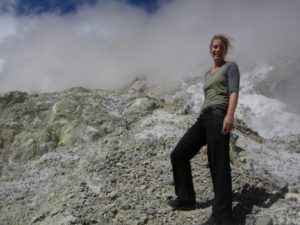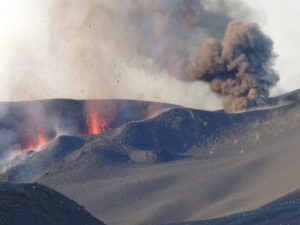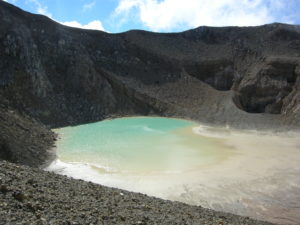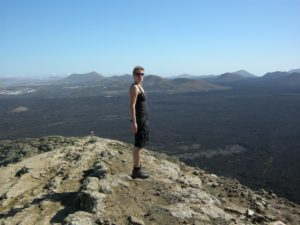Research
Summary of Research interests
My research as a high temperature isotope geochemist focusses on the role of subduction in ‘contaminating’ the mantle with Earth’s surface materials (sediments, crust and volatiles) and the potential recycling of these materials back to the surface. I study this process in modern magmatic systems by determining the compositions of ocean island- and subduction related volcanics and in ancient systems by studying the sub continental lithospheric mantle (xenoliths and diamonds).
To make a contribution to geochemical research I invest hugely in laboratory technique development which helps us to push back analytical frontiers. In collaboration with the instrument manufacturer, ThermoFischerScientific, I developed and validated new amplifier technology for the latest generation TIMS (TRITON-Plus) to measure the Sr, Nd and Pb isotope compositions of small geological samples. This successful development work has led to the commercial release of the 1013 Ω amplifiers and their application to rare gas, stable isotope and MC-ICPMS analyses. Subsequently, I optimised the chemical separation techniques to allow the analysis of smaller sample sizes to solve fundamental problems in a variety of geological topics; e.g., dating individual mineral inclusions in diamonds and resolving mantle heterogeneities in melt inclusions in olivine. In addition I have enthusiastically invested to apply the new technology in a range of geological questions outside my area of expertise; dust provenance in ice cores for paleoclimate reconstruction and across a wide variety of provenance related questions in social sciences; archaeometry, human provenance, provenance of pigments and metal artworks.
With the successful award of an ERC starting grant (ReVolusions) I have now build my own team that will link my expertise in radiogenic isotopes with studies of volatiles and stable isotopes to better understand how subduction influences the deep cycling of carbon through time. Development of new techniques to analyse carbon and oxygen isotopes in minute CO2 gas samples are expected to lead to a breakthrough and major contribution to our understanding of deep carbon fluxes.






